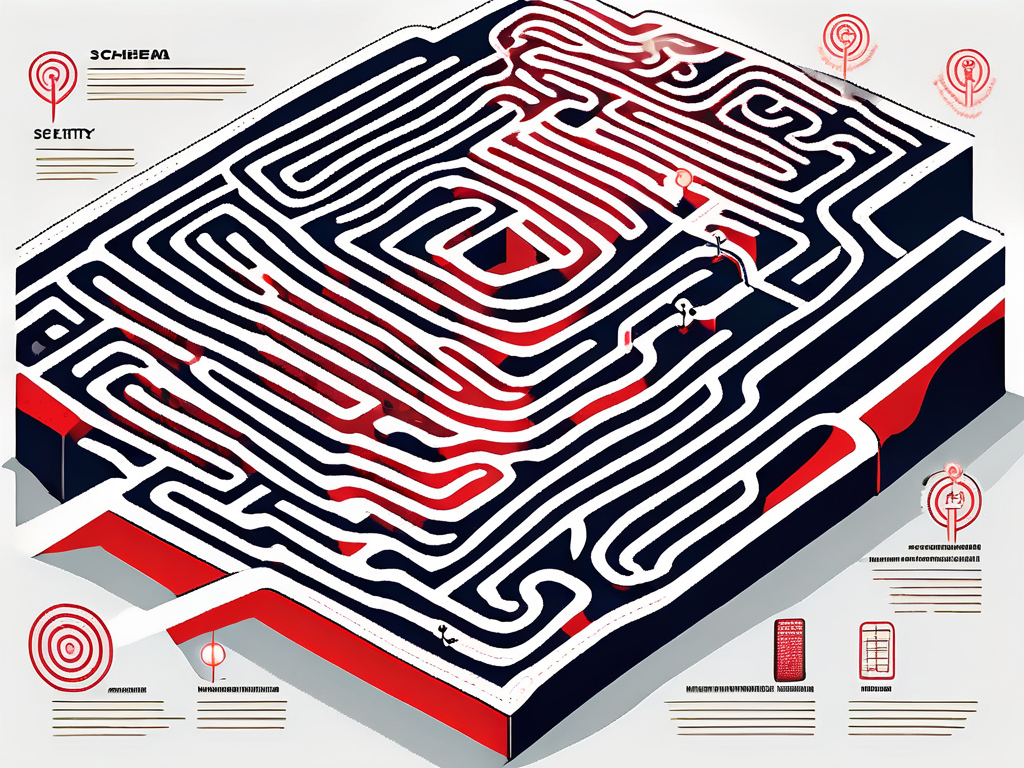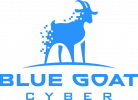Updated November 10, 2024
In the vast universe of XML, Relax NG stands out as a powerful tool. It’s a schema language designed to streamline the validation of XML documents. Think of it as a strict librarian ensuring that every book on the shelf follows the proper format. But just like a library can have its quirks and vulnerabilities, so does Relax NG.

What is Relax NG?
Relax NG, or “Relational Next Generation,” provides a flexible way to define the structure and content of XML documents. It simplifies the complexity often associated with traditional schema languages. Allowing users to express complex structures succinctly enhances readability and maintainability.
Imagine trying to fit a square peg into a round hole. Traditional methods often make this task tedious. Relax NG, however, offers multiple ways to represent the same information, making it adaptable and user-friendly. This flexibility is advantageous in scenarios where XML documents must evolve. As requirements change, the ability to modify schemas without extensive rewrites is invaluable, allowing developers to keep pace with dynamic project needs.
Importance of Relax NG in XML Schema Validation
Schema validation is crucial in ensuring data consistency. Relax NG plays a vital role in this ecosystem. It ensures that XML documents meet specific criteria, akin to ensuring every puzzle piece fits ideally before completing the picture. The validation process checks for structural integrity and verifies that the data adheres to predefined rules, which is essential in industries where data accuracy is paramount, such as finance or healthcare.
The tool is particularly beneficial for developers. It helps catch mistakes early in the process. Early detection of errors can save significant time and resources, which is a win-win situation for everyone involved. Moreover, Relax NG’s integration with various programming languages and tools enhances its usability, making it a preferred choice for many developers. The availability of libraries and support for XML and compact syntax allows for seamless incorporation into existing workflows, ensuring developers can leverage its capabilities without a steep learning curve.
Unveiling the Relax NG Vulnerabilities
While Relax NG offers flexibility and ease of use, it has flaws. Like any tool, vulnerabilities can lurk beneath the surface. Acknowledging these vulnerabilities is the first step in creating a more secure environment.

Common Vulnerabilities in Relax NG
One of the primary vulnerabilities associated with Relax NG is its sensitivity to complex constructs. Intricate and nested structures can lead to unexpected behaviors during validation. Furthermore, improper handling of data types might create loopholes.
Incremental changes to schemas can also introduce vulnerabilities. A developer inadvertently alters a schema without understanding the broader implications, which can create issues. Each change echoes throughout the system, so caution is paramount.
The lack of comprehensive documentation on best practices can exacerbate these vulnerabilities. Developers may be unaware of the potential pitfalls when implementing Relax NG, leading to poorly designed schemas that do not adhere to security standards. This knowledge gap can result in inconsistent validation processes, where some data passes unchecked, creating further opportunities for exploitation.
Potential Risks of Relax NG Vulnerabilities
Neglecting these vulnerabilities can lead to data integrity issues. Imagine a house of cards that tumbles down due to a shaky foundation. The implications can be far-reaching, affecting applications and end-users alike.
Exposing sensitive information becomes a substantial risk. Attackers could exploit weaknesses, leading to unwanted access and data breaches. The potential fallout can damage reputations and trust—a cost no organization can afford.
The cascading effects of these vulnerabilities can lead to compliance issues, particularly in industries governed by strict data protection regulations. Organizations may face legal repercussions if they fail to secure their data adequately. This not only results in financial penalties but can also lead to a loss of customer confidence as clients become increasingly wary of how their data is handled and protected. The stakes are high, and understanding these vulnerabilities is crucial for any organization that relies on Relax NG for data validation.
The Technical Aspects of Relax NG Vulnerabilities
Now that we’ve examined the vulnerabilities, it’s time to dive into the technical aspects. Understanding these nuances is essential for anyone who wishes to fortify their systems.
Understanding the Technicalities
Relax NG operates on two primary formats: XML and compact. Each format offers different advantages, but they also come with their own sets of vulnerabilities. Recognizing potential issues in both formats is crucial for effective management.
For instance, XML format can lead to performance issues when handling large documents, whereas compact format may obscure complex validation rules, making errors more challenging to spot. It’s a double-edged sword that requires skillful handling. Additionally, the intricacies of namespace management in XML can introduce further complications. Misconfigurations in namespaces can lead to validation failures that are not immediately apparent, making it essential for developers to understand how namespaces interact within their schemas thoroughly.
How Vulnerabilities Occur in Relax NG
Vulnerabilities often arise from the interaction of multiple factors. Complex dependency paths within schemas can cause cascading errors, catching developers off guard. A simple oversight in one schema can have detrimental effects on related schemas.
The use of external resources for validation may introduce additional risks. These resources, if compromised, can manipulate the validation process, rendering it useless. Always be mindful of where your data is coming from! The reliance on third-party libraries or services for Relax NG validation can also lead to unexpected vulnerabilities. If these libraries are not regularly updated or audited for security flaws, they can weaken your validation chain. Developers should establish a routine for assessing the security of external dependencies and consider implementing automated tools that can help identify vulnerabilities before they become a problem.
Mitigating Relax NG Vulnerabilities
With proper awareness of vulnerabilities, the next logical step is mitigation. It’s not enough to acknowledge they exist; active measures must be taken to safeguard systems.
Best Practices for Mitigating Vulnerabilities
Establishing clear guidelines for schema design can drastically reduce vulnerabilities. Consistent naming conventions and schema organization enhance clarity. Moreover, regular reviews of schemas can help identify potential pitfalls before they become a problem. This proactive approach not only helps maintain the integrity of the schema but also fosters a culture of vigilance within the development team. By integrating schema reviews into the development lifecycle, teams can ensure that potential issues are caught early, reducing the risk of vulnerabilities slipping through the cracks.
Training teams on best practices in XML and Relax NG can also boost security. An informed developer is less likely to make critical mistakes. Sharing knowledge can differentiate between a secured system and a compromised one. Workshops and collaborative sessions can be invaluable, allowing team members to discuss real-world scenarios and learn from past experiences. Additionally, creating a repository of common vulnerabilities and their solutions can serve as a quick reference guide, empowering developers to make informed decisions as they work.
Tools and Techniques for Vulnerability Management
Various tools can aid developers in managing vulnerabilities in Relax NG. XML validation tools can provide immediate feedback on errors, while schema analyzers can highlight potential weaknesses. Utilizing these tools can streamline the development process and bolster security measures. Moreover, integrating these tools into the continuous integration/continuous deployment (CI/CD) pipeline ensures that vulnerabilities are identified and addressed in real-time, allowing for a more agile response to security threats.
Automated testing must not be overlooked, either. Regularly testing schemas against known vulnerabilities can reveal areas needing attention. It’s akin to a health check-up—better safe than sorry! Furthermore, static analysis tools can help detect vulnerabilities before the code is executed. This preemptive strategy saves time and resources, as it minimizes the need for extensive debugging later in the development process. By fostering a culture of continuous improvement and vigilance, organizations can significantly enhance their security posture against potential threats in Relax NG implementations.
Future of Relax NG: Security and Beyond
As technology evolves, so do the tactics employed by malicious actors. It’s essential to predict future vulnerabilities to stay one step ahead. This vigilance ensures that Relax NG remains a reliable tool in the XML domain.
Predicting Future Vulnerabilities
One potential future vulnerability may stem from integrating Relax NG with other technologies. As systems grow more interconnected, the scope for vulnerabilities widens. Developers must remain aware of how changes in one system can impact others. For instance, integrating Relax NG with cloud-based services could introduce new attack vectors, where unauthorized access to shared resources might compromise data integrity. This interconnectedness necessitates a comprehensive understanding of Relax NG and the surrounding technologies to mitigate risks effectively.
The rising complexity of XML applications can lead to new types of vulnerabilities. Increased reliance on nested structures invites issues that were previously unheard of. As developers push the boundaries of XML schema design, they may inadvertently create scenarios where malicious payloads can exploit these complex structures. Vigilance and adaptability are key, and developers should consider implementing automated testing tools that can simulate attacks on these intricate designs, allowing them to identify potential weaknesses before they can be exploited.
The Role of Security in Relax NG’s Future
Integrating security measures from the beginning can significantly bolster future defenses. Employing security best practices during schema design creates a robust framework. Moreover, adhering to industry standards can enhance the overall resilience of systems. For example, utilizing well-defined access controls and validation mechanisms can prevent unauthorized modifications to XML documents, ensuring that only trusted sources can make changes. This proactive approach protects data and builds trust among users and stakeholders.
Feedback loops and continuous learning will also play a crucial role. Developers must analyze incidents as they occur to understand vulnerabilities better. The goal is to create a culture where security is prioritized at all stages of development. Regular security audits and code reviews can help identify potential flaws early in development. Fostering an environment where team members feel empowered to report security concerns without fear of repercussions can lead to a more robust security posture. By embracing a mindset of continuous improvement and collaboration, the community surrounding Relax NG can ensure that it evolves in tandem with emerging threats and challenges.
Conclusion: Navigating Relax NG Vulnerabilities
Understanding Relax NG vulnerabilities is fundamental for developers and organizations alike. Recognizing the nuances of this schema language, one can confidently navigate its complexities.

Key Takeaways
Awareness is half the battle. Understanding what vulnerabilities exist is essential for effective management. Secondly, adopting best practices, utilizing the right tools, and fostering a culture of continuous improvement can mitigate these risks.
Predict and adapt. The technology landscape constantly changes, and staying ahead requires flexibility and foresight. Relax NG’s future hinges on its adaptation to the evolving security environment.
Conclusion
The journey through Relax NG vulnerabilities is not without its challenges. It’s a delicate dance of managing risk while maximizing functionality. Yet, with the right knowledge and tools, developers can master this intricate art.
As you venture forth, remember that every schema tells a story. Make sure yours is secure and filled with integrity and resilience. Happy validating!
As you strive to ensure your XML schemas are secure and resilient, remember that the cybersecurity landscape is ever-evolving, especially in the medical device industry. Blue Goat Cyber provides comprehensive cybersecurity solutions tailored to meet FDA regulations and enhance patient safety. Our expert team, equipped with top certifications and practical experience, is ready to partner with you for advanced penetration testing, vulnerability assessments, and secure development practices. With our fixed-fee pricing and commitment to long-term partnerships, we offer the support and continuous monitoring necessary to protect your critical assets. Contact us today for cybersecurity help and take the first step towards securing your medical devices with a trusted leader in the field.


